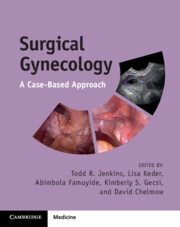180 results
VaTEST III: Validation of 8 Potential Super-Earths from TESS Data
-
- Journal:
- Publications of the Astronomical Society of Australia / Accepted manuscript
- Published online by Cambridge University Press:
- 11 April 2024, pp. 1-22
-
- Article
- Export citation
Hydrothermal Synthesis of Corrensite: A Study of the Transformation of Saponite to Corrensite
-
- Journal:
- Clays and Clay Minerals / Volume 47 / Issue 2 / April 1999
- Published online by Cambridge University Press:
- 28 February 2024, pp. 212-218
-
- Article
- Export citation
Tracking coarse sediment in an Alpine subglacial channel using radio-tagged particles
-
- Journal:
- Journal of Glaciology , First View
- Published online by Cambridge University Press:
- 09 October 2023, pp. 1-15
-
- Article
-
- You have access
- Open access
- HTML
- Export citation
Advocacy at the Eighth World Congress of Pediatric Cardiology and Cardiac Surgery
-
- Journal:
- Cardiology in the Young / Volume 33 / Issue 8 / August 2023
- Published online by Cambridge University Press:
- 24 August 2023, pp. 1277-1287
-
- Article
-
- You have access
- Open access
- HTML
- Export citation
A review of the conservation status of Black Stork Ciconia nigra in South Africa, Lesotho, and Eswatini
-
- Journal:
- Bird Conservation International / Volume 33 / 2023
- Published online by Cambridge University Press:
- 11 April 2023, e56
-
- Article
-
- You have access
- Open access
- HTML
- Export citation
Protection against cystic echinococcosis in sheep using an Escherichia coli-expressed recombinant antigen (EG95) as a bacterin
-
- Journal:
- Parasitology / Volume 150 / Issue 1 / January 2023
- Published online by Cambridge University Press:
- 13 October 2022, pp. 29-31
-
- Article
-
- You have access
- Open access
- HTML
- Export citation
Screening and diagnostic imaging at centres performing congenital heart surgery in middle-income countries
-
- Journal:
- Cardiology in the Young / Volume 33 / Issue 5 / May 2023
- Published online by Cambridge University Press:
- 10 June 2022, pp. 780-786
-
- Article
- Export citation
Outbreak of STEC O157:H7 linked to a milk pasteurisation failure at a dairy farm in England, 2019
- Part of
-
- Journal:
- Epidemiology & Infection / Volume 150 / 2022
- Published online by Cambridge University Press:
- 18 May 2022, e114
-
- Article
-
- You have access
- Open access
- HTML
- Export citation
Preface
-
- Book:
- Surgical Gynecology
- Published online:
- 19 November 2021
- Print publication:
- 02 December 2021, pp xiii-xiv
-
- Chapter
- Export citation
Contributors
-
- Book:
- Surgical Gynecology
- Published online:
- 19 November 2021
- Print publication:
- 02 December 2021, pp ix-xii
-
- Chapter
- Export citation
Copyright page
-
- Book:
- Surgical Gynecology
- Published online:
- 19 November 2021
- Print publication:
- 02 December 2021, pp iv-iv
-
- Chapter
- Export citation
Index
-
- Book:
- Surgical Gynecology
- Published online:
- 19 November 2021
- Print publication:
- 02 December 2021, pp 278-282
-
- Chapter
- Export citation
Contents
-
- Book:
- Surgical Gynecology
- Published online:
- 19 November 2021
- Print publication:
- 02 December 2021, pp v-viii
-
- Chapter
- Export citation

Surgical Gynecology
- A Case-Based Approach
-
- Published online:
- 19 November 2021
- Print publication:
- 02 December 2021
What is OSFED? The predicament of classifying ‘other’ eating disorders
-
- Journal:
- BJPsych Open / Volume 7 / Issue 5 / September 2021
- Published online by Cambridge University Press:
- 12 August 2021, e147
-
- Article
-
- You have access
- Open access
- HTML
- Export citation
Epidemiological investigations identified an outbreak of Shiga toxin-producing Escherichia coli serotype O26:H11 associated with pre-packed sandwiches
-
- Journal:
- Epidemiology & Infection / Volume 149 / 2021
- Published online by Cambridge University Press:
- 10 August 2021, e178
-
- Article
-
- You have access
- Open access
- HTML
- Export citation
Addressing ethical and laboratory challenges for initiation of a rapid whole genome sequencing program
-
- Journal:
- Journal of Clinical and Translational Science / Volume 5 / Issue 1 / 2021
- Published online by Cambridge University Press:
- 09 August 2021, e177
-
- Article
-
- You have access
- Open access
- HTML
- Export citation
Non-suicidal self-harm: an evolving epidemiology
-
- Journal:
- Psychological Medicine / Volume 53 / Issue 1 / January 2023
- Published online by Cambridge University Press:
- 21 July 2021, p. 283
-
- Article
-
- You have access
- HTML
- Export citation
Evidence of on-going transmission of Shiga toxin-producing Escherichia coli O157:H7 following a foodborne outbreak
-
- Journal:
- Epidemiology & Infection / Volume 149 / 2021
- Published online by Cambridge University Press:
- 07 June 2021, e147
-
- Article
-
- You have access
- Open access
- HTML
- Export citation
Copper Mining in the Bronze Age at Mynydd Parys, Anglesey, Wales
-
- Journal:
- Proceedings of the Prehistoric Society / Volume 87 / December 2021
- Published online by Cambridge University Press:
- 24 May 2021, pp. 261-291
- Print publication:
- December 2021
-
- Article
- Export citation



 R
R R
R R
R R
R R
R R
R R
R R
R